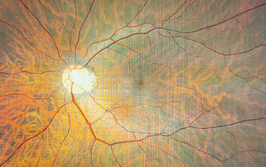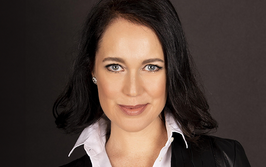
A League of His Own
Sitting Down With... Amar Agarwal, Chairman and Managing Director, Dr Agarwal’s Eye Hospital and Eye Research Centre, Chennai, India.
Ophthalmology runs in your family…
Dr. Agarwal’s Eye Hospital was founded by my parents in 1957. They started out with just two dollars, and performed their first surgery inside a patient’s house. My father had a dream of building his hospital in the shape of an eye, and that’s what happened – it’s even been featured on Ripley’s Believe it or Not. The upper lid is the porch, you enter through the pupil, and the ramp is the optic nerve.
In 2006, I told my parents I wanted to start expanding the hospital. At the time, we were seeing 100 to 200 patients a day. Since then, we’ve built 60 hospitals, with 14 in Africa and one in Cambodia. We see around 10,000 patients in a single day. By 2020 our goal is to have around 200 hospitals – we have a lot of plans to expand.
You’re a surgeon with a heavy case load – how do you find time for hospital expansion?
I spend my days at the operating table. My four sons are all ophthalmologists, and two of them also have MBAs. So two of them look after the business and expansion plans, and two are with me in the hospital. And that’s not to mention the rest of our group – we have over 3,000 people working with us now.
What achievements are you most proud of?
I’m happy to have been able to contribute to surgical techniques in my field, especially my work on pre-Descemet’s endothelial keratoplasty (PDEK). In 2013 I met with Harminder Dua (who is a genius), and heard his lecture on his discovery of the pre-Descemet layer. We began a collaboration to work on keratoplasty that includes the Descemet membrane and the pre-Descemet’s layer, which makes harvesting and handling easier.
There are three main types of endothelial keratoplasty surgeries. First we have DSAEK, and here you’re taking a 100 or 200 µm graft. But when I remove the endothelium in the eye I’m operating on, that’s only removing 15 µm – I’m making the cornea thick. With DMEK, I’m taking out 15 µm and putting back 15 µm, which is better. But in DMEK, Descemet’s membrane sticks to the stroma until the age of 40 or 50 years. This means if you want to perform DMEK, you want a donor around the age of 50. With PDEK, we can use donors as young as 9 months old. I’ve also been using glued IOLs in combination with PDEK in extreme cases (such as eyes with trauma, or weak zonules).
What’s the benefit of glued IOLs?
People often ask why I don’t do a sutured or anterior chamber IOL when endocapsular placement isn’t possible. My response? Break a camera lens, then suture the lens back on – you cannot take a photograph. When a patient has a sutured lens, even when it is two point fixation, or four point fixation, it’s like a hammock, it has to move. A glued lens doesn’t.
We’ve all got smartphones these days, and there’s a free app called SloMo, which can slow videos you take down to 25 frames per second. Take a sutured IOL, put it on the slit lamp, and take a video with SloMo. You will see the lens move. But with a glued IOL, it won’t.
What else are you working on?
Right now I’m still working on PDEK – but with this technique I’ve observed badly scarred, white corneas become clear. To my mind, the explanation for this could be stem cells from the young donor corneas – but I have to prove it!
Your Ophthalmic Premier League has been a big hit – what was the inspiration?
Over here in India, we have the Indian Premier League – IPL cricket. I always hold a conference in July in Chennai, the annual conference of the Indian Intraocular Implant Society. One day I thought, “Why don’t we hold an Ophthalmic Premier League?” I thought about the format, and decided on four teams with four players each. I held it once at the ESCRS summer congress, and the World Ophthalmology Congress, and it was a success, so I approached the American Academy to ask if I could hold it there – we’ve run it at AAO’s annual congress for the past two years, and will do it again in Chicago this year. David Chang will also be holding the similar-in-concept Cataract Olympics this year at the ASCRS meeting, which is great, as it introduces more people to the format.
Why do you think it’s been so well received?
I’m really happy everyone enjoys it. You have 16 of the top surgeons in the world, showcasing their craziest cases and how they handled them, with four minutes per person. It’s a great learning opportunity. Then you add some entertainment value – we go to each team and say “We want you to attack the other teams!” which makes it funny, too, as you get to watch them compete.
I think what makes it so great is this mix of fun and education – it makes people laugh and it’s really different to the normal lectures, but it contains a lot of educational scientific content too.
I have an extensive academic background in the life sciences, having studied forensic biology and human medical genetics in my time at Strathclyde and Glasgow Universities. My research, data presentation and bioinformatics skills plus my ‘wet lab’ experience have been a superb grounding for my role as a deputy editor at Texere Publishing. The job allows me to utilize my hard-learned academic skills and experience in my current position within an exciting and contemporary publishing company.













